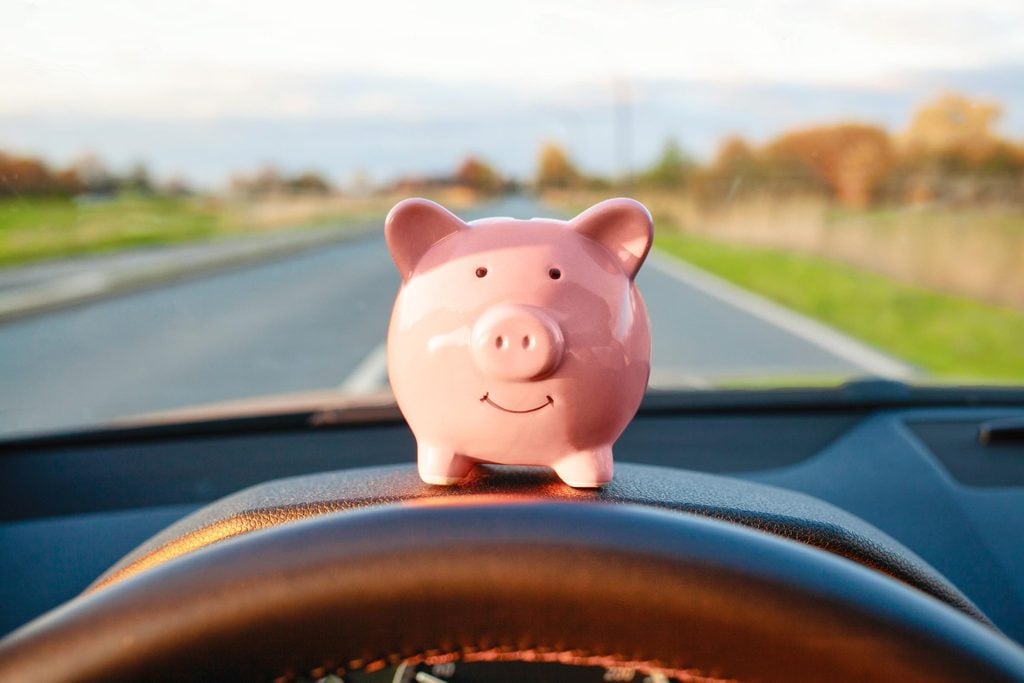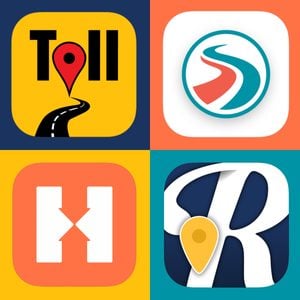How to Budget for a Road Trip
Updated: May 10, 2023

Road trips don't have to be expensive if you follow these budgeting tips and tools.
Americans are rediscovering the joys of a classic road trip in droves, with 59 percent of families in a recent VRBO survey saying they’re planning to get behind the wheel on vacation in the near future. Some people like to go on spur-of-the-moment-trips, while others like to use an American road trip guide to help them plan. Road trips not only let you slow down, see the scenery, and explore new areas, but they also offer a respite from pricey airline tickets and all the costs associated with a flying vacation, including car rentals, airport shuttles, and long term parking.
However, you do need to plan ahead to be able to create a road trip budget whether you’re traversing the country in a Route 66 road trip or traveling around Big Sur so you can keep costs low. Some things to keep in mind include fuel prices, vacation rentals, RV and camping site fees, food costs, and admission tickets. Here’s everything you need to figure out how much your road trip will cost and create your road trip budget.
Gas prices and tolls
First things first: If you’re going to drive, you’re going to need fuel, so it’s a given you’ll want to calculate gas costs for your road trip. According to AAA, at press time, the average price of a gallon of gas was $2.46, and gas prices have been rising, although not monumentally, ticking upwards since January. “Pump prices continue to climb,” says the organization, “in part due to expensive crude oil and the market’s growing optimism that demand will increase amid the vaccination roll-out.” However, depending on where you’re driving, you may catch a break: According to AAA, (at press time), the cheapest gas in the country can be found in Mississippi ($2.14), Texas ($2.16), Oklahoma ($2.18), Missouri ($2.19), Louisiana ($2.20), Arkansas ($2.21), South Carolina ($2.22), Kansas ($2.23) and Tennessee ($2.23). GasBuddy has a comprehensive fuel road trip cost calculator to help you figure out your round trip costs. Wherever you’re traveling, you’ll appreciate knowing how to save money on gas.
When you’re budgeting for fuel, also allocate money for tolls. For some states, this won’t be a large line item. For others, where you have to cross an expensive bridge or tunnel (hello, $16 NYC river crossings!), you’ll want to take more detailed notes. You can download the Tollsmart free toll calculator app to help keep track.
Vacation rentals
If traveling with a family, the average four-person vacation rental in the United States this summer is expected to be $315.18 per night (or approximately $78 per person), but you can find cheap places to stay depending on your destination, length of stay, time of year, and size of the group traveling with you. As an example, Orlando was pinpointed by HomeToGo as one of the most affordable destinations in the United States with a median price per night of $201.60 for a four-person vacation rental.
RV and camping sites
Harvest Hosts recently conducted a survey which showed that 94 percent of people spend less than $75 per night when traveling via RV; that’s an all-inclusive number (entry/place to stay for the night with water, electricity, and sewer to dump fluids), less than a typical hotel stay alone, says CEO Joel Holland.
When traveling in an RV or car, travelers should make sure they have a place to stay, and must also think about visiting places that don’t require a large out-of-pocket spend. At Harvest Hosts, for example, offers a $79 yearly membership fee that comes with unlimited access to any of 1,900 locations. You can also seek out these spots for free overnight parking for your RV. Have a tent? Free camping sites are available across the United States.
Entertainment and activities
The line item for activities can go from literally $0 if you’re hiking in a free state park or lounging on a beach in Florida to hundreds of dollars if you’re headed to a spot like Walt Disney World where tickets currently start at $109 per person per day. However, if you stay focused on enjoying the great outdoors, you’ll be able to keep costs down.
If you’ll be road-tripping to national parks, it’s a worthwhile investment to buy a National Parks Pass for an $80 annual fee. With it, you can get your entire car of passengers entrance into any national park or historic site for no additional cost (note that there are significantly discounted passes for seniors and military). By comparison, the most popular national parks charge up to $35 every time you enter the park, so the savings add up quickly. These are the best national park road trips to take all year long.
Food costs
This is another line item that will vary considerably, especially if you factor in road trip snacks. However, if you’re driving an RV or staying at a vacation rental, you’ll most likely be bringing your own groceries which will cut costs greatly as compared to eating out. Of course, you’re on vacation, so you’ll want to splurge occasionally. To get a baseline budget, according to Credit Donkey, the average U.S. household spends about $224 a week on groceries at home or $8 per adult per day. So you can start with this number to stock your vacation home or RV with essentials such as cereal, milk, coffee, fruit, bread, lunch meat and PB&J, and pasta and sauce for easy breakfasts, lunches, and dinners. Experts suggest using the 1-2 rule for vacation meals: For every fine dining experience, plan to have two economical meals. Check out these secrets to traveling cheap according to travel agents.
Carry some cash
Another line item to consider: How much cash should you bring on your road trip? With ATMs available across the country and credit cards being accepted in more and more places, it may not seem imperative to fill your wallet when you fill your gas tank, but you can often get significant discounts by paying cash (including gas), and if you see a roadside farm stand, hand-made crafts or baked goods, or inexpensive items like an ice cream cone, you may find it’s a cash-only economy. Figure on about $20 per day in small bills so you’ll be ready if an opportunity for a road trip pit stop presents itself. If you want help keeping track of everything you’re spending in both cash and credit, try the road trip cost calculator from Practical Money Skills.
Sources:
- VRBO.com: “VRBO Trend Report 2021”
- AAA.com: “No Love at the Pump this February; AAA Forecasts Gas Prices to Continue Climbing”
- Harvest Hosts: “Is 2021 the Year of the RVer?”
- CreditDonkey.com: “Average Cost of Food Per Month Will Scare You”



